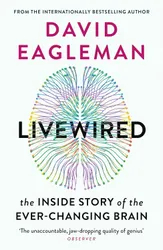This book explores the ways in which brains can change and adapt. In particular, it focuses on how brains can adapt to changes in body plans and sensory organs in order to help organisms to survive and thrive.
Parts of the book talk about the senses. Often, humans or animals with sensory deficiencies provide case studies for how brains can adapt, such as blind people who have a greater proportion of their brains given over to auditory processing. This often allows people to enhance their hearing abilities. In some cases, people have even developed a form of echolocation to help them navigate without sight. These sorts of changes also allow scientists to determine how much our brains can change and adapt as we get older. People who are born blind, for example, have brains that are more fully adapted to living without sight. Whereas people who go blind later in life have less complete adaptations. While this might suggest that an older brain is less effective at learning and adapting than a younger brain, the book also makes the case that there are lots of ways in which our brains change and adapt into later life, allowing us to learn new skills. It also makes the interesting point that our brains must remain fixed in some aspects in order for us to retain memories and hold onto our sense of identity.
As well as adaptations for senses, the brain can also adapt to different body plans. This section of the book discusses changes to body plans caused by loss of limbs as well as more mundane changes like tool use. This also includes the development of prosthetics. On both the sensory and prosthetic fronts the author discusses various artificial ways in which human invented devices can be implanted to replace missing senses and body parts. These include devices that can convert from one sense into another so that, for example, the skin (touch) or ears (hearing) are used as the channel for visual information for a blind person. After some practice, people were able to replace some of what they were missing with these devices.
As well as making up for missing or deficient senses or body parts, this view of the brain as a device that can flexibly handle new inputs and outputs has relevance for evolution. The author makes the case that brains that work this way provide an evolutionary benefit, because if the body plan, or sensory organs, of a species changes through evolution, the brain can adapt without needing to evolve itself. I found this point very interesting, as it allows for more rapid evolution and better adaptation of organisms to their environment. If the brain had to evolve in order to use a new body part or sense, then there would be no evolutionary advantage to the new part initially and it wouldn’t be selected for by evolution.
The author speculates about ways in which we may be able to augment our senses and bodies with artificial devices, taking advantage of our brains flexibility and adaptability to interpret the new data coming in. These augmentations, as well as the prosthetic devices mentioned, seem to be the author’s main research interest and a business interest as well. I felt they were presented a little uncritically, as though these are all solved problems. But there were some fascinating possibilities presented.
I would have liked a bit more biological detail into how new neurons are made and the connections between them formed. For me the idea of a brain adapting to new sensory information was very similar in principle to it adapting to a new limb or other output device. In fact the sensory devices they developed seemed to work much better once the brain could also move the body around and determine from feedback how the sensory data changed. So I found some parts of the book a little repetitive. I got the basic idea and would have preferred other topics to be explored. The focus on the senses and prosthetics, while obviously an important subject for many people affected by these issues, meant that a treatment of how the brain learns new skills, languages etc later in life wasn’t really developed. Still this is a well written and thought provoking book.
